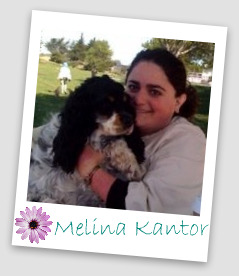Part 1: What’s the point?
 ~ By Melina Kantor
~ By Melina Kantor
I’m not kidding when I say I wrote my first novel on a whim. I’m also not kidding when I say I had nothing better to do at the time. It was November of 2007, and there was this event I kept hearing about called National Novel Writing Month (NaNoWriMo). I had an idea for a novel, so I figured 50,000 words in 30 days? Why not?
I had a basic outline in my head. I even had a feel for who the protagonist was. So I opened up a fresh document, called it NaNo2007, and started typing.
You could argue that this story has a happy ending – I made it to 50,000 words with three whole days to spare. But the end result was anything but pretty. Yeah, I had some fun, snarky characters and some gripping scenes, but none of that mattered because it was so disorganized the story was impossible to follow.
If you saw the current state of my apartment, you’d be surprised that the disorganization scared me. But that’s beside the point. Writing those 50,000 words involved blood, sweat, tears and unhealthy amounts of caffeine and Cheerios. There was no way I wasn’t going to turn them into something, well, at the very least. . . legible.
Enter Scrivener.
According to their Web site:
Scrivener is a powerful content-generation tool for writers that allows you to concentrate on composing and structuring long and difficult documents. While it gives you complete control of the formatting, its focus is on helping you get to the end of that awkward first draft.
From the moment I downloaded it, I was hooked. Not to mention more than slightly obsessed with creating folders. Here’s a glimpse of what Scrivener has to offer:
I should also mention that I was also hooked on a podcast called Will Write For Wine, hosted by CJ Barry and Lucy March. Episode 33, “On Structure, We Think,” was my first introduction to the classic three act structure and the twelve steps of The Hero’s Journey.
So, I created a folder for each act, and folders within each of those folders for each step of The Hero’s Journey, and cut, pasted, and moved my scenes around like chess pieces. I also had a folder for my research.
In the end, I had 75,000 words that (almost) resembled an actual story. I’d also learned that I’m a plotter, not a pantser, and that yes, you can in fact plot “after the fact.”
By the time I got to NaNo 2008, I had a whole system going. Just look at the folder and notecard system I had for my “cast:”
(For more Scrivener screenshots, click here.)
One of the most important things I learned from Will Write for Wine (and later from Lucy March’s fabulous revision class) is that structure is something a writer uses to hang their story and jokes on. Scrivener is very much like a physical structure we can use to hang our stories.
If you leave your story on it long enough, things will fall into place and the wrinkles will begin to disappear.
Next time, I’ll be back with tales of my new iPad 2, and how I’m using it in conjunction with Scrivener.
Melina writes contemporary women’s fiction with a pinch of oregano and a dash of chutzpah. By day, she is an elementary school computer teacher (hence the affinity for apps). She lives in Brooklyn with the loudest dog in the world. You can visit her at http://melinakantor.com.

